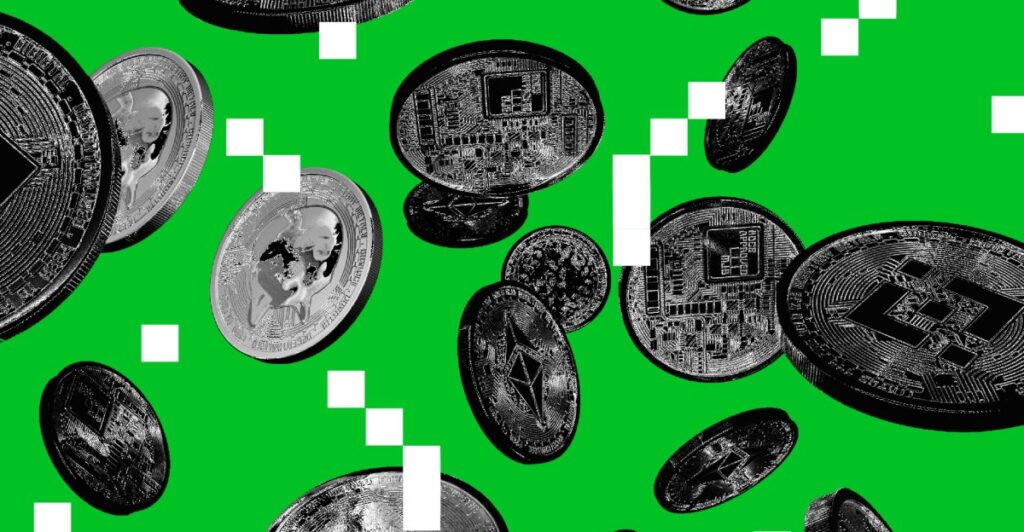
AI could soon surpass Bitcoin mining in energy consumption, according to a new analysis that concludes artificial intelligence could use close to half of all the electricity consumed by data centers globally by the end of 2025.
The estimates come from Alex de Vries-Gao, a PhD candidate at Vrije Universiteit Amsterdam Institute for Environmental Studies who has tracked cryptocurrencies’ electricity consumption and environmental impact in previous research and on his website Digiconomist. He published his latest commentary on AI’s growing electricity demand last week in the journal Joule.
AI already accounts for up to a fifth of the electricity that data centers use, according to de Vries-Gao. It’s a tricky number to pin down without big tech companies sharing data specifically on how much energy their AI models consume. De Vries-Gao had to make projections based on the supply chain for specialized computer chips used for AI. He and other researchers trying to understand AI’s energy consumption have found, however, that its appetite is growing despite efficiency gains — and at a fast enough clip to warrant more scrutiny.
“Oh boy, here we go.”
With alternative cryptocurrencies to Bitcoin — namely Ethereum — moving to less energy-intensive technologies, de Vries-Gao says he figured he was about to hang up his hat. And then “ChatGPT happened,” he tells The Verge. “I was like, Oh boy, here we go. This is another usually energy-intensive technology, especially in extremely competitive markets.”
There are a couple key parallels he sees. First is a mindset of “bigger is better.” “We see these big tech [companies] constantly boosting the size of their models, trying to have the very best model out there, but in the meanwhile, of course, also boosting the resource demands of those models,” he says.
That chase has led to a boom in new data centers for AI, particularly in the US, where there are more data centers than in any other country. Energy companies plan to build out new gas-fired power plants and nuclear reactors to meet growing electricity demand from AI. Sudden spikes in electricity demand can stress power grids and derail efforts to switch to cleaner sources of energy, problems similarly posed by new crypto mines that are essentially like data centers used to validate blockchain transactions.
The other parallel de Vries-Gao sees with his previous work on crypto mining is how hard it can be to suss out how much energy these technologies are actually using and their environmental impact. To be sure, many major tech companies developing AI tools have set climate goals and include their greenhouse gas emissions in annual sustainability reports. That’s how we know that both Google’s and Microsoft’s carbon footprints have grown in recent years as they focus on AI. But companies usually don’t break down the data to show what’s attributable to AI specifically.
To figure this out, de Vries-Gao used what he calls a “triangulation” technique. He turned to publicly available device details, analyst estimates, and companies’ earnings calls to estimate hardware production for AI and how much energy that hardware will likely use. Taiwan Semiconductor Manufacturing Company (TSMC), which fabricates AI chips for other companies including Nvidia and AMD, saw its production capacity for packaged chips used for AI more than double between 2023 and 2024.
After calculating how much specialized AI equipment can be produced, de Vries-Gao compared that to information about how much electricity these devices consume. Last year, they likely burned through as much electricity as de Vries-Gao’s home country of the Netherlands, he found. He expects that number to grow closer to a country as large as the UK by the end of 2025, with power demand for AI reaching 23GW.
Last week, a separate report from consulting firm ICF forecasts a 25 percent rise in electricity demand in the US by the end of the decade thanks in large part to AI, traditional data centers, and Bitcoin mining.
It’s still really hard to make blanket predictions about AI’s energy consumption and the resulting environmental impact — a point laid out clearly in a deeply reported article published in MIT Technology Review last week with support from the Tarbell Center for AI Journalism. A person using AI tools to promote a fundraiser might create nearly twice as much carbon pollution if their queries were answered by data centers in West Virginia than in California, as an example. Energy intensity and emissions depend on a range of factors including the types of queries made, the size of the models answering those queries, and the share of renewables and fossil fuels on the local power grid feeding the data center.
It’s a mystery that could be solved if tech companies were more transparent
It’s a mystery that could be solved if tech companies were more transparent about AI in their sustainability reporting. “The crazy amount of steps that you have to go through to be able to put any number at all on this, I think this is really absurd,” de Vries-Gao says. “It shouldn’t be this ridiculously hard. But sadly, it is.”
Looking further into the future, there’s even more uncertainty when it comes to whether energy efficiency gains will eventually flatten out electricity demand. DeepSeek made a splash earlier this year when it said that its AI model could use a fraction of the electricity that Meta’s Llama 3.1 model does — raising questions about whether tech companies really need to be such energy hogs in order to make advances in AI. The question is whether they’ll prioritize building more efficient models and abandon the “bigger is better” approach of simply throwing more data and computing power at their AI ambitions.
When Ethereum transitioned to a far more energy efficient strategy for validating transactions than Bitcoin mining, its electricity consumption suddenly dropped by 99.988 percent. Environmental advocates have pressured other blockchain networks to follow suit. But others — namely Bitcoin miners — are reluctant to abandon investments they’ve already made in existing hardware (nor give up other ideological arguments for sticking with old habits).
There’s also the risk of Jevons paradox with AI, that more efficient models will still gobble up increasing amounts of electricity because people just start to use the technology more. Either way, it’ll be hard to manage the issue without measuring it first.
 Latest World Breaking News Online News Portal
Latest World Breaking News Online News Portal






